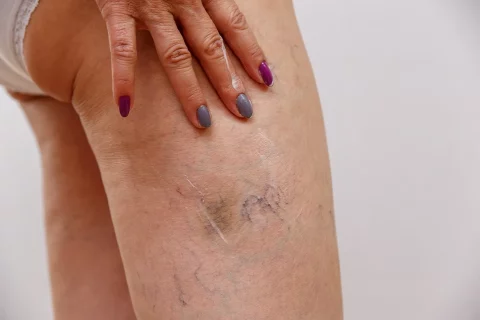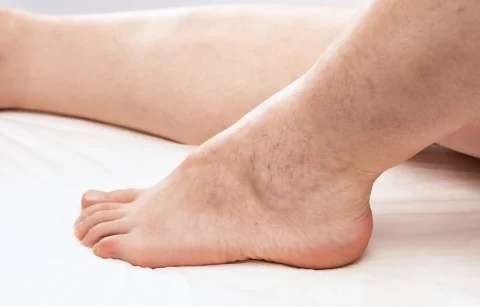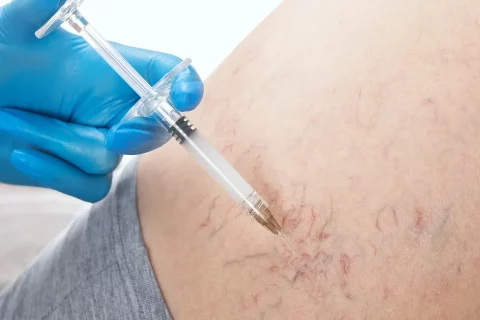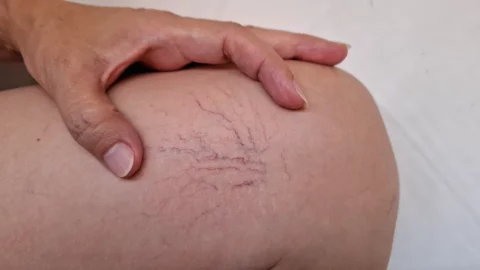How to Spot the Subtle Signs of HHT in Early Childhood for Prompt Diagnosis and Treatment
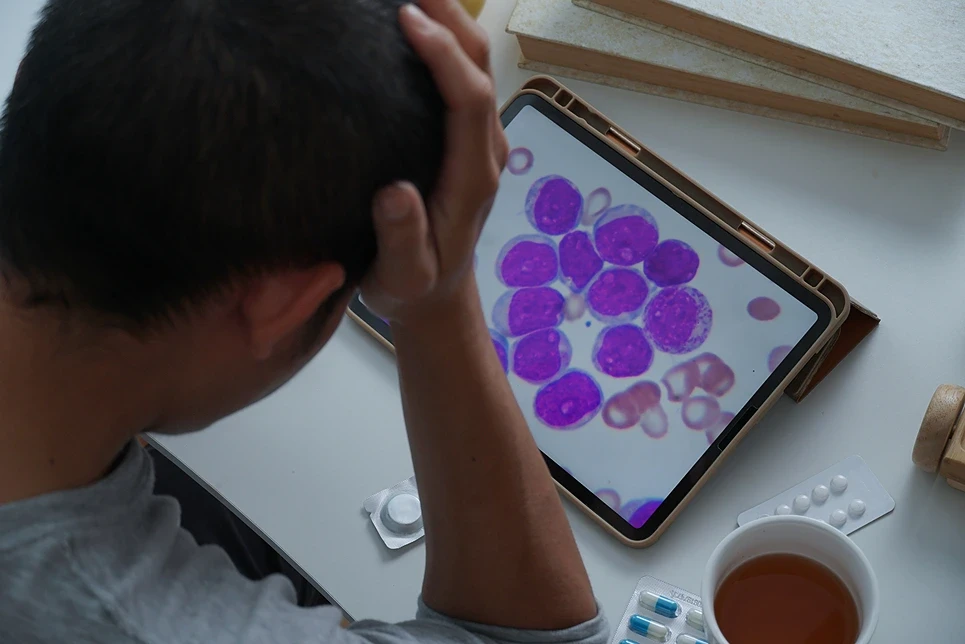
HHT can cause abnormal blood vessel growth in children. Though subtle at first, recognizing the early signs of HHT and seeking prompt diagnosis and treatment can help minimize complications and maintain your child’s quality of life.
Hereditary hemorrhagic telangiectasia (HHT), also known as Osler-Weber-Rendu syndrome, is a rare genetic disorder that affects the blood vessels and causes them to develop abnormally over time. While symptoms often don’t appear until adulthood, early signs can sometimes be detected in childhood.
Recognizing these early symptoms is crucial for getting an HHT diagnosis and starting appropriate treatment to prevent potentially serious complications.
Learn more about HHT and how it affects blood vessels by booking a consultation with our vein doctors.
Living with unwanted veins is a thing of the past, when you can simply schedule a free consultation with Vein Center Doctor and find your ideal solution today.
An Overview to Hereditary Hemorrhagic Telangiectasia (HHT)
Hereditary hemorrhagic telangiectasia is an inherited disorder characterized by malformed blood vessels in the skin, mucous membranes, and often internal organs. These abnormal blood vessels, called arteriovenous malformations (AVMs), have thin walls and can rupture easily.
When an AVM ruptures, it causes sudden bleeding. The most common locations are the nose, gastrointestinal tract, lungs, brain, and liver. While AVMs can form anywhere in the body, they often develop in those key organs.
HHT is caused by mutations in one of several genes involved in blood vessel development and repair. It’s inherited in an autosomal dominant pattern, meaning a child has a 50% chance of inheriting HHT if one parent has the disorder.
About 1 in 5,000 people have HHT worldwide, but many more are unaware they have it due to lack of diagnosis. Recognizing the signs in childhood is the first step toward getting proper treatment.
Why is Early Diagnosis Important for HHT?

Diagnosing HHT early in life is crucial for several reasons:
- Preventing serious bleeding complications. Symptoms like nosebleeds, gastrointestinal bleeding, and iron deficiency anemia can be managed more effectively when caught early.
- Allowing proper screening and monitoring. Once diagnosed, children can get regular screening for AVMs in the lungs, brain, liver, and other organs. This facilitates early detection and treatment of AVMs before they bleed or cause other problems.
- Improving quality of life. When left undiagnosed, symptoms like chronic nosebleeds and fatigue from anemia can significantly impact a child’s daily life. Proper treatment can minimize these effects.
- Enabling lifestyle modifications. With an HHT diagnosis, families can make adaptations like avoiding contact sports to reduce bleeding risks.
- Planning for the future. Young adults diagnosed with HHT can make informed choices about careers, family planning, and medical management as they get older.
Early diagnosis provides the opportunity to properly monitor for complications and initiate the right treatments to maintain a good quality of life.
Common Early Symptoms of HHT in Children
While HHT symptoms are highly variable, even among family members, there are some characteristic early signs parents should watch for:
1. Frequent Nosebleeds
Nosebleeds, also called epistaxis, are the most common symptom of HHT in children. Over 90% of pediatric HHT patients experience frequent nosebleeds.
Nosebleeds typically start by age 10 in pediatric HHT patients. Children can experience nosebleeds as often as several times a week to several times a day. Frequent nosebleeds in a child are a key red flag for HHT.
What Triggers Nosebleeds in HHT?
The nasal mucosa contains a dense network of blood vessels. AVMs that form here are prone to rupturing and bleeding. Nosebleeds can occur spontaneously or be triggered by minor trauma, respiratory infections, blowing the nose forcefully, or dry nasal passages.
2. Telangiectasias
Telangiectasias are small AVMs that appear as pink to red spots on the skin or mucous membranes. They represent dilated blood vessels that can bleed easily.
Common locations for telangiectasias in children with HHT include:
- Lips, mouth, and tongue
- Fingers, hands, and wrists
- Nose and ears
- Conjunctiva of the eyes
They may look like tiny red freckles or spider veins. The number and size tend to increase gradually with age.
3. Digestive Tract Bleeding
AVMs in the gastrointestinal tract are also common in HHT, present in over 80% of patients. This can lead to bleeding from the gastrointestinal mucosa.
AVMs most frequently develop in the mucosa of the stomach, small intestine, colon, and rectum. This can cause chronic bleeding into the digestive tract, or sudden severe bleeding if an AVM ruptures.
What Are the Signs of Digestive Tract Bleeding?
Possible symptoms of gastrointestinal bleeding in a child with HHT include:
- Tarry black stools or bloody stools
- Vomiting blood
- Unexplained iron deficiency anemia
- Abdominal pain
Gastrointestinal bleeding is difficult to recognize since the blood is obscured during digestion. Thus, anemia or stool changes may be the only signs.
At the first signs of frequent nosebleeds, skin lesions or unexplained anemia, contact our vein specialists to evaluate your child for HHT.
Less Common but Serious Symptoms

While nosebleeds and telangiectasias are most common, HHT patients can also develop severe internal bleeding if AVMs form in certain organs. Parents should be aware of these additional symptoms:
4. Arteriovenous Malformations (AVMs)
Arteriovenous malformations are abnormal tangles of dilated blood vessels that shunt blood directly from arteries to veins. They bypass the capillaries and can rupture.
AVMs form when the small vessels connecting arteries directly to veins fail to develop properly. This creates “shortcuts” for blood to bypass the capillary beds. High-pressure arterial blood flows directly into low-pressure venous vessels, causing the vessels to dilate and become fragile over time.
Where Can AVMs Develop in the Body?
While AVMs can occur almost anywhere, high-risk locations include:
- Lungs – bleeding into lungs
- Brain – hemorrhagic stroke
- Liver – bleeding causing anemia; heart failure (rare)
A brain AVM can be especially serious if it ruptures and causes a hemorrhagic stroke. Prompt diagnosis of HHT facilitates screening for AVMs.
5. Iron Deficiency Anemia
Anemia is common in HHT patients due to chronic blood loss from subtle bleeding episodes.
Frequent nosebleeds and gastrointestinal bleeding can cause iron deficiency over time as iron is lost with the blood. Since the bleeding is often intermittent and not visible, the resulting anemia may be the main sign.
What Are the Symptoms of Iron Deficiency Anemia in Children?
Symptoms of anemia include:
- Fatigue, weakness, reduced exercise tolerance
- Pale skin, lips and nail beds
- Irritability
- Dizziness
- Rapid heartbeat
Testing reveals low hemoglobin, hematocrit, and iron levels.
How to Diagnose and Treat HHT in Children
If the early symptoms of HHT are recognized in a child, diagnosing and treating the condition as early as possible is important.
To diagnose HHT, our physician will check for:
- Family history
- Characteristic symptoms
- Telangiectasias on exam
- Results of:
- Complete blood count to check for anemia
- Coagulation studies to assess bleeding risk
- Genetic testing to identify HHT mutations
- Imaging studies (CT, MRI) to detect AVMs
A definite diagnosis is made when 3 of the 4 key criteria are met.
While there is no cure for HHT, effective treatments to manage symptoms include:
- Nosebleeds – moisturizing nasal ointments, cauterization, antifibrinolytic medicines
- AVMs – embolization, surgical removal
- Anemia – iron supplements
- Lifestyle changes – avoiding contact sports and anti-clotting medicines
Spider vein treatments can help manage the cosmetic concerns associated with HHT. While these treatments won’t address the underlying genetic cause of HHT or prevent the formation of new blood vessels, they can effectively reduce the appearance of visible blood vessels, such as spider veins.
Our comprehensive diagnostic testing and cutting-edge treatments can identify HHT early and manage it effectively. Book an appointment today
Spider Vein Treatments We Offer
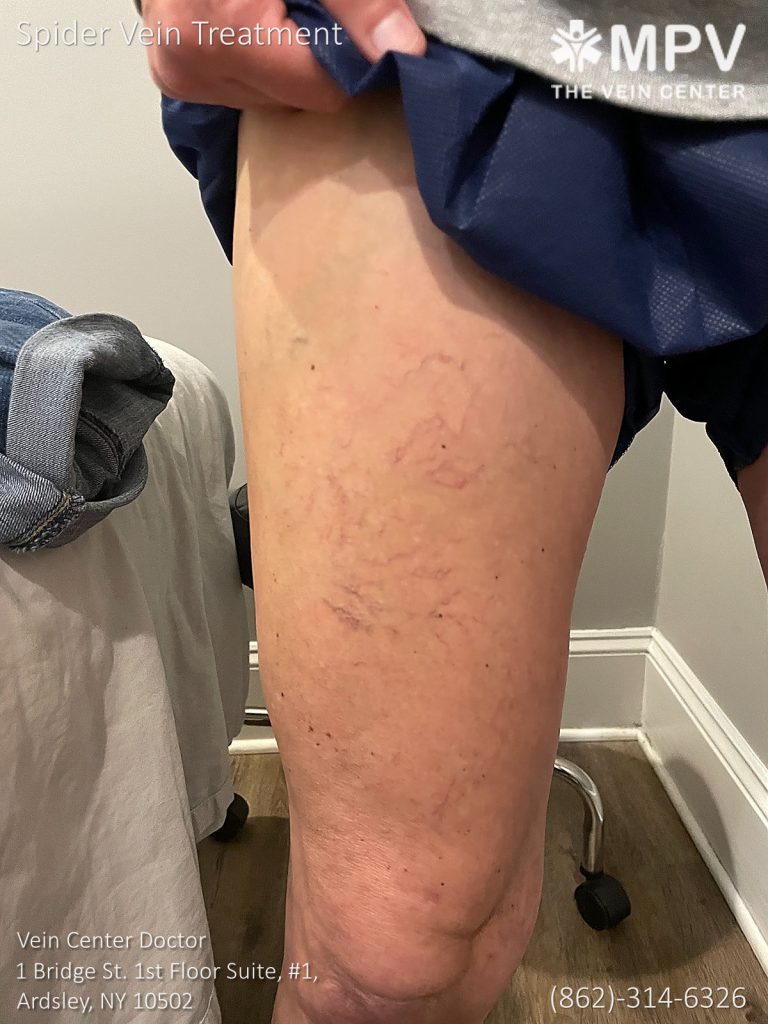
- Sclerotherapy: This minimally-invasive procedure involves injecting a sclerosing agent solution into the damaged vein. This causes the vein to scar and seal off, redirecting blood flow through healthier veins. The collapsed vein is later reabsorbed by the body.
- VenaSeal: This uses an FDA-approved medical adhesive or “glue” to close off the damaged vein. It allows patients to return to normal activity the next day without compression stockings.
- Compression Therapy: External pressure devices like compression stockings can speed up recovery after other treatments by improving blood flow. This helps the body absorb any scar tissue faster.
Treatment focuses on easing symptoms, improving appearance, and preventing complications. With proper management from our experts, children with HHT can live full lives with well-controlled manifestations.
Conclusion
It’s important for parents to understand the signs and symptoms that could represent HHT in a child. Recurrent nosebleeds, telangiectasias on the skin and mucosa, gastrointestinal bleeding, and unexplained anemia should prompt evaluation for HHT.
Early diagnosis enables screening for AVMs and initiation of appropriate treatments that can significantly improve the child’s symptoms and quality of life. If HHT is caught early, families and doctors can work together to optimize the management of this challenging but treatable disease.
Partner with the compassionate experts at Vein Center Doctor to optimize your child’s health, quality of life and future wellbeing.
Dr. Sood at Vein Center Doctor is always happy to offer free consultations to anyone looking to understand their vein issues. Don’t spend another day wondering how to make those visible veins go away. Call us at 862-227-1143 today!


